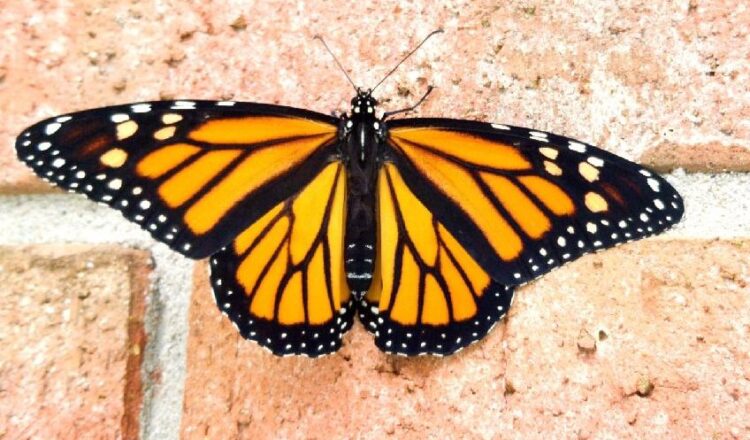Cornell Cooperative Extension Master Gardener Feature
By Joyce Ziembo, Master Gardener Volunteer Cornell Cooperative Extension Allegany County
Last year my son and daughter-in-law purchased a home in southern Texas. When March arrived, so did the Monarch butterflies. The new owners soon realized that the previous resident of their home had planted milkweed and flowering plants in the backyard. Both are beneficial to the life of this endangered Monarch butterfly.
In the spring, the Monarch is returning from wintering in Mexico. They have spent the winter in the mountains on oyamel fir trees. They gather together by the thousands in the branches of the fir to help protect them from the temperatures getting too cold or too hot. These butterflies will live an average of 6 to 9 months so they can complete this long winter journey. The lifespan of the Monarch butterflies heading to their summer residence is usually only 2 to 6 weeks. It is remarkable that the same insect can have two unique lifespans, depending on its’ destination.
The Monarch will begin the journey heading north to find a new breeding ground. The female has to find milkweed to lay her eggs and hatch a new population of butterflies, as milkweed is her ONLY choice. This process continues so that each population of hatched butterflies continues north to the next destination. By the time you see a Monarch in Western New York, around June, you are seeing the grandchild of the butterfly that began its journey in Mexico. This is the reason why the Monarch needs to find milkweed all along the way to the final summer destination.
Milkweed is the host plant that Monarch butterfly need to reproduce. The female will lay her eggs on the plant and when the black, gold and white caterpillars emerge, they eat the leaves. The milkweed has a poisonous substance to it that does not harm the caterpillar but will help to keep the predators away.
Once the caterpillar is fat and ready, it crawls to a safe place to form a chrysalis. I was able to witness the beautiful sight of the caterpillar enclosing itself into such a perfect form. The finished chrysalis even has a gold thread circling the upper portion. Within a few weeks, you can actually see the forming wings inside the chrysalis. The whole process seems almost magical, especially when the Monarch emerges.
These beautiful insects are declining for many reasons, not just one. Their winter habitat is being lost to logging and land development. The use of pesticides is also a factor in their decline. The unavailability of the once abundant milkweed also comes into play. Not to mention, disease that sometimes runs through the population. So, as you can see, they are struggling with many disadvantages.
This is why gardeners are encouraged to plant milkweed in a wind protected area with sweet nectar flowers. The flowers are especially important to have their blooms when the butterfly appears. The Monarch butterflies are an absolute wonder to see when they frequent our yards and, they are also very beneficial. They are pollinators!
Milkweed has many varieties, but it is best to plant what is native to our area. The plant that is called Common Milkweed (Asclepias syriaca) is a good choice. It will grow easily in well-drained soil with full or part sun. You can always reach out to a Master Gardener, in your area, to answer any questions you may have about planting milkweed.
The experience I have had with the Monarch, has made me resolve to help keep the population thriving. The Monarch butterfly or any butterfly is too precious to lose. We want our children to be able experience their magic. They are a wonder to our gardens.
Did you know Wellsville has a group dedicated to Monarch butterflies ? Read more about them:






